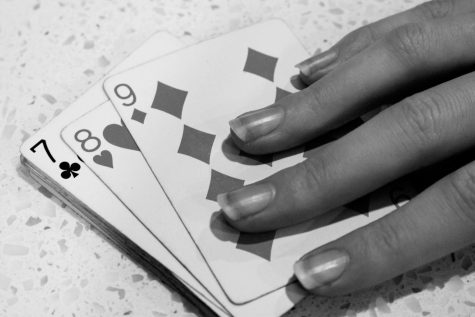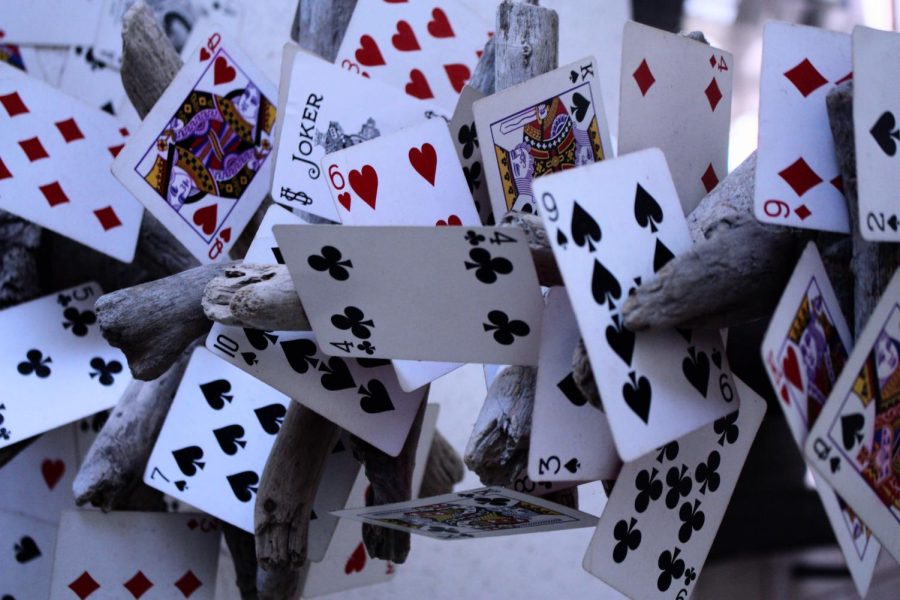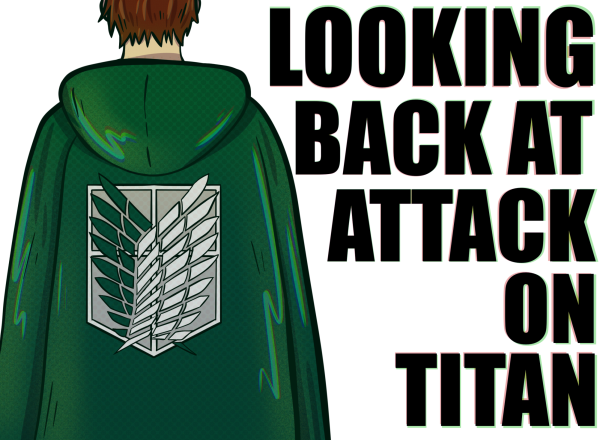Here’s the deal: Three entertaining card games to bring into this semester
Whether it be in the comfort of your own home or the quad of Foothill Tech, cards are the perfect interactive tools that provide an extremely large selection of games that can either be purely for fun or to test the wit of any person who chooses to play them.
February 6, 2023
In a world where technology and fast-paced living seem to be the tyrants of socialization issues, card games move in a positive direction by pulling people together to indulge in a large variety of games. Enjoy stopping the normal chaos of life and gripping laughter and mind-sharpening fun with those around you.
The convenience of cards is unmatched: a simple five dollar purchase, in which the deck size makes it practically effortless to bring cards almost anywhere. Foothill Tech’s long lunches give the perfect amount of time to enjoy time with friends, eliminate stress and take a break from the school work surrounding the day. They are also a great after school activity that are accessible to use any day of the week.
Here is a guide to three enjoyable card games to start off your semester.
Hand and Foot
Overall Rating: 9/10
“Hand and Foot” is a mind stretching game of teamwork that combines strategy and luck. Be prepared for longer rounds that may take a while to complete. It’s the perfect game for when time isn’t an issue and you’re ready to take on a team challenge.
Difficulty Rating: 8/10
At first, “Hand and Foot” may seem intimidating with the long list of rules but with time and practice, the game difficulty severely declines and becomes extremely engaging and fun.
Objective: Be the first team to get rid of your “hand” and “foot” first; cumulatively score the most points over four rounds.
What to know:
-The game is played in four rounds. In round one, one team member must have 50 points to start playing. In round two, 90 points. In round three, 120 points, and in round four, a minimum of 150 points.
-Jokers (wild cards) are worth 50 points, twos (wild cards) are worth 20 points, eight through King are worth 10 points, and three through seven are worth five points.
-To play any cards down at all you must have cards that are in a group of three to eight of the same numbered or suited card, these are called melds. Melds may only have one to two wild cards.
-Once 8 cards are in a meld, the meld is called a “closed book.” Books that have wild cards in them are called black books; they are worth 300 points. Books that don’t have wildcards are called red books; they are worth 500 points.
-At least four and up to 10 people can play
Instructions:
- Get five to six decks of cards and shuffle them together
- First, deal out 11 cards to each player, this stack will be called the “hand.”
- Next, deal out another 11 cards to each player, this will be called the “foot.”
- Only pick up your “Hand to start off with”
- The rest of the cards, the cards that aren’t your “hand” and “foot” are kept in the center of the draw deck
- The person to the left of the dealer then draws two cards from the draw deck. This continues until someone has enough points to play down. When playing down cards in the beginning they must always be played in a meld. After one teammate plays down, the other team member can play however many cards on the meld and the person who put them down can play on them in future rounds.
- Once there are eight cards in a meld, it is called a closed book.
- In order to stop the round from going you must have a total of three black books and three red books and no cards left in your hand. It is okay to get over the amount of red books or black books, but the ultimate goal is to go out first to prevent opponents from getting more points.
- After the round is complete, count the total number of points achieved by the amount of books that you have.
- Then count the points of every single card your team put down, including the cards that are a part of the red and black books.
- Record the scores and move on to the next rounds. Repeat these steps through each round.
Egyptian Rat Slap

Overall rating: 9.5/10
Be prepared for a fast paced, highly attentive game that requires memorization of several sequences and the ability to quickly identify patterns. Egyptian Rat slap will be a test of your reflexes and memorization skills. Overall it’s a laughter inducing game of entertaining competitiveness.
Difficulty rating: 5/10
The rules are very straightforward and comprehensible. The real difficulty comes in the form of reaction time. Do you have what it takes to slap cards in fragments of a second before your peers do?
What you need to know:
-Doubles are two cards that possess the same value. For instance, two kings that are placed down in a row.
-Sandwiches are a sequence involving 2 of the same valued cards with a single card in the middle of them. For example, a three placed in between two sixes.
-Staircases are a sequence of three cards that consecutively increase or decline. For example, the sequence nine, ten, then Jack or eight, seven, and then six.
-Two or more people can play
Objective: Obtain all of the cards in the deck
Instructions:
- Deal out the entire deck to all players evenly and keep your deck facedown.
- Go in a clockwise direction, taking turns as each person places down a card from the top of their deck onto a pile place in the middle of everyone playing.
- As people place down each card, be on the lookout for sandwiches, staircases, and doubles. If you see one of these sequences, slap the deck as fast as you can. The person who slaps the deck first gets all of the cards in the pile and puts them on the bottom of their deck.
- The person who wins the cards then places down a new card from the top of their deck to start the game back up.
- There are special rules for when face cards show up. If a jack shows up, the person next to them has one chance to beat the face card by placing down a face card. If a queen shows up, the person next in line has two chances to place down a face card. If a king is placed down, the person next up has three chances to place down a face card. If an ace is put down, the person next in line has four chances to play down a face card. If the person next in line is unable to beat the face card, the person who played down the face card gets all the cards in the deck. If the player is able to beat the face card, by placing down another face card, the next person has to try to beat their face card. Keep in mind that slaps can occur during this period.
- Continue the game until one person has all of the cards in their hand.
B.S.
Overall rating: 7/10
Get ready to show your poker face, B.S. will attest to your lying skills. The game B.S. moves at whatever pace players desire and is altogether a great socialization game that is perfect to play with friends and family.
Difficulty Rating: 3/10
This is a game that is extremely easy to pick up, follow the straightforward rules and you’ll be ready to indulge in a round of B.S.
Instructions
- Grab a deck of cards and deal out the entire deck to how ever many people choose to play (three or more players are required)
- Each person then looks at their cards, and the person who holds the ace of spades starts off the game. Then the next person plays down “twos” and the person after puts down “threes”
- In a clockwise motion players take turns by putting down one to four cards face down in the discard pile while announcing how many cards they are placing and what card it is. For example say “two kings” while placing down your cards.
- If you don’t have the number or face card that comes next in order, you must lie about what you have in your hand. For example say “one queen” but you actually place down one two.
- If anyone who is playing thinks that you are lying, they can call you out by saying B.S. They must call B.S. before the next person in order plays down their card(s).
- If the person that they called B.S. on lied, then the people who lied must take all the cards in the middle. If the person who was called out did not lie, then the person who called BS has to take all of the cards in the middle.
- Play the game until one person wins by running out of cards.































